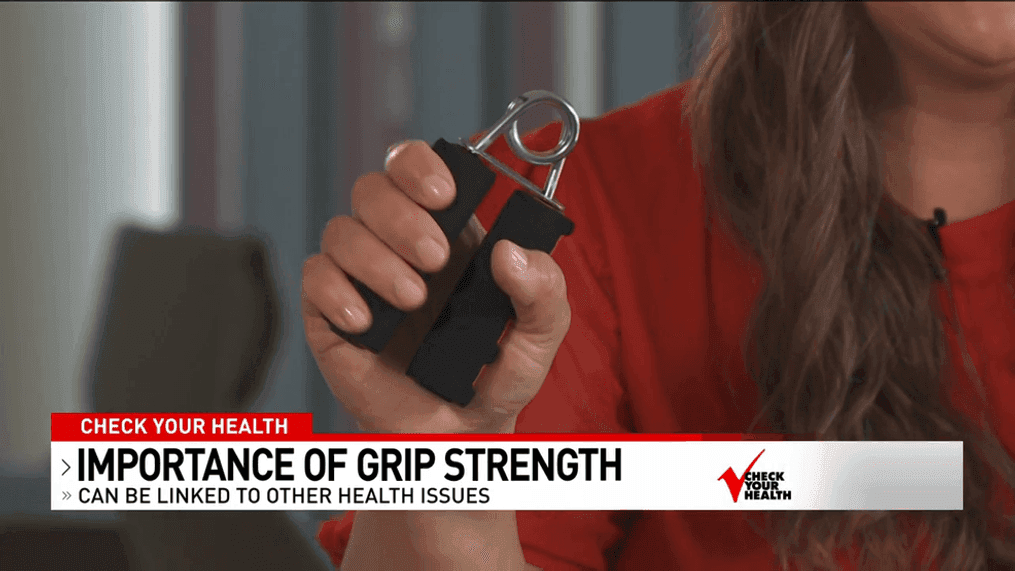Check Your Health- Grip Strength: A Key Indicator of Health and Quality of Life

Understanding and maintaining physical well-being is essential for high quality of life, and grip strength is a surprisingly insightful measure of overall health that can provide valuable insight. Often overlooked, this metric can reveal important information about your cardiovascular health, muscle strength, and potential risks for various conditions.
Grip strength is the force exerted by your hand, wrist, and forearm muscles when gripping or clenching an object.
"Grip strength directly impacts one's ability to grasp, pull, lift, or manipulate objects,” said Erica Quigley, health promotions specialist at Select Health. “It’s essential for various activities like opening jars, throwing a ball, pulling weeds, carrying groceries, and gripping handrails."
Studies indicate poor grip strength can be linked with several negative health outcomes, including heart disease, arthritis, osteoporosis, type 2 diabetes, and certain cancers. It can also predict post-surgical complications, recovery times, and mortality rates. For elderly individuals, declining grip strength may also signal deteriorating cognitive function, increasing the risk of dementia and Alzheimer’s disease.
Monitoring your grip strength can help you make informed decisions about improving or maintaining it, leading to better lifestyle choices. Early detection of declining grip strength can aid in prevention and promote a healthier life.
Benefits of Grip Strength
Grip strength is important because it serves as a reliable indicator of overall muscle health and functionality. It is also linked to the ability to perform everyday activities independently, which is crucial for maintaining a good quality of life, especially in older adults.
Additionally, stronger muscles and connective tissues are more resistant to injury. Practicing healthy behaviors early in life can help retain strength and function. Increased physical activity boosts muscle strength, enhances mental and physical health, and can contribute to extend life expectancy.
Measuring Your Grip Strength
To measure your grip strength, stand and hold a grip strength device in your dominant hand with your arm at a right angle at your side. Squeeze the device as hard as you can and hold. These tests can be taken with your primary care provider at health care facilities or clinics. Additionally, the health and wellness team at Select Health regularly offers these simple tests for free at various community events across the state.
Normal grip strength ranges from 70-160 pounds for men and 40-100 pounds for women.
Reduced grip strength often indicates diminished muscle strength, which can lead to adverse health outcomes, particularly when combined with a chronic medical condition. Grip strength measurements serve as a valuable screening tool for evaluating overall muscle strength. A strong or weak hand grip can help assess the overall risk of death from any cause.
Ways to Increase Hand Grip Strength
- Improving grip strength involves exercises that require gripping, holding, or pulling: Simple exercises like squeezing a tennis ball or stress ball, wringing out a wet towel, hanging from a pull-up bar, lifting weights with pinched fingers, using hand grippers, and carrying dumbbells while walking.
- Stretch your hands and wrists, holding each stretch for at least five seconds.
- Use a rubber band to extend your fingers apart and then back together.
- Train each major muscle group two to three days per week using various methods such as weight training machines, free weights, resistance bands, or body weight.
- Push-ups, planks, and lunges engage most of the body’s muscle groups. Performing two to four sets of each, gradually increasing the intensity and allow at least 48 hours between strength training sessions for major muscle groups.
"Grip strength isn't just about holding on – it's a window into your health,” Quigley said. “By recognizing and nurturing your grip strength, you're not just improving your grip—you're investing in a healthier, more vibrant future for yourself."
If you want to increase your grip strength, Select Health offers a free tracking tool to monitor your daily activities and improve your grip strength.
Strong grip strength correlates with better mobility, fewer falls, and enhanced resilience against injuries. By regularly monitoring and working to improve grip strength, individuals can ensure they retain their physical autonomy and reduce the risk of disabilities and health complications as they age.